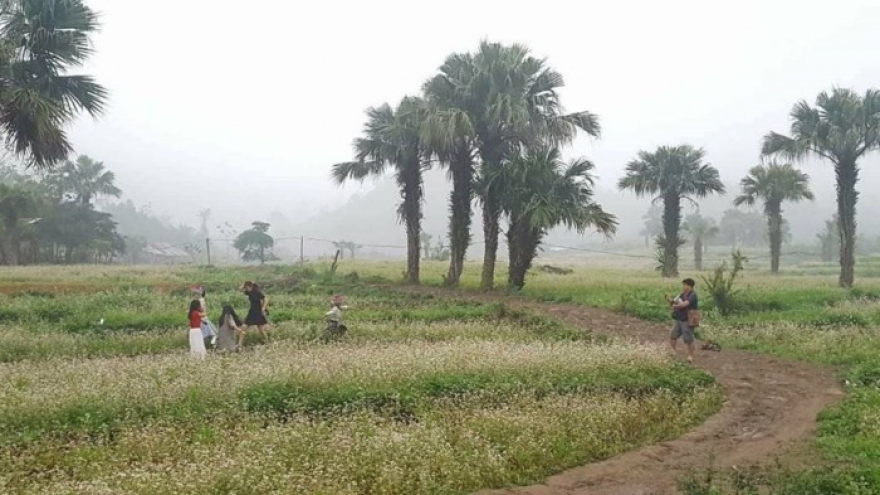House architecture of the Mong
VOV.VN - Among the hill sides rising up to Dong Van karst plateau in Ha Giang province, travelers are stunned by the magnificent natural landscape, lush terraced fields, and peaceful villages of Mong people.
 |
| A Mong's earthen house |
Hidden behind grey stone fences, the earthen houses of the Mong create a mysterious scene in the high mountains.
The Mong have been living in high mountains for hundreds of years. The architecture of their houses is strongly influenced by their living conditions and the harsh terrain and weather. They build houses of earthen walls and tile or grass roofs to keep the house warm in winter and cool in summer and to protect them from evildoers and wild beasts.
To build an earthen house, they make wooden frames 1.5 m long and 0.5 m wide. Soil is refined to remove roots, rocks, and other waste. Young men in the village are invited to help building the house.
They put soil in the frames and ramp it down to make the walls solid and firm. After making the walls, the house’s owner will go to the forest on a good day to chop down some big trees for the beams of the house.
 |
| Making the earthen wall |
A Mong’s house, no matter how big or small, has 3 sections and 2 doors. The left section is the cooking and sleeping space of the house’s owner. A wood stove for heating is placed in the right section, which is also a space for guests.
The central area is for the altar and for family gatherings. Ha Thi Lien, a tourist, who visits the house of Giang Mi Su in Meo Vac district said, “I feel comfortable inside the house. It’s spacious. There is a yard for children to play.”
The main door is made of high quality wood, without metal hinges, latches, or bolts. The Mong believe that the door represents their hospitality. The door should not have any sharp or spiky metal parts because they don’t reflect the owner’s kindness.
 |
| Mong people are making an earthen house. |
The Mong fence their houses with stone walls. It takes them several months to collect stones of different sizes and shapes to build a fence without using any kind of cement.
Tha Minh Cho in Meo Vac district said, “We build a long stone fence to protect the house. The fence helps to stop winds and keeps the house warm in winter and cool in summer.”
Along the fence they plant apricot, plum, and peach trees. When spring comes, the light brown earthen house and grey fence are decorated with thousands of beautiful pink peach and white apricot blossoms.

